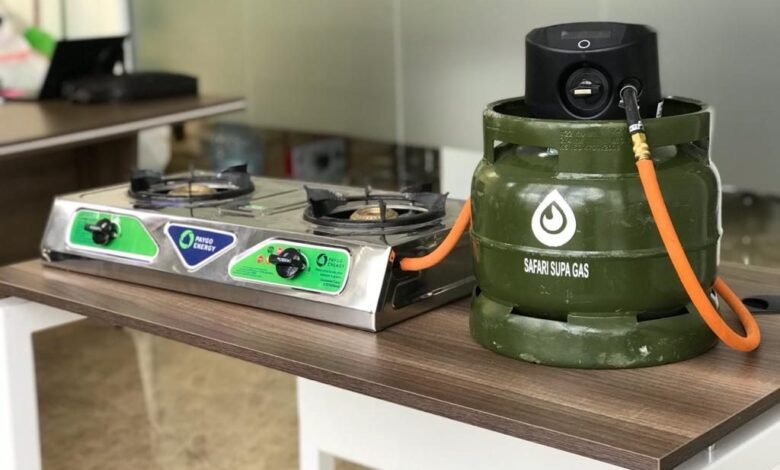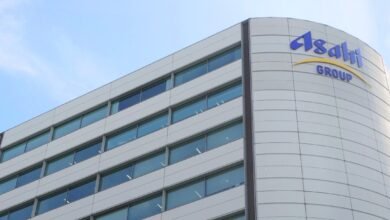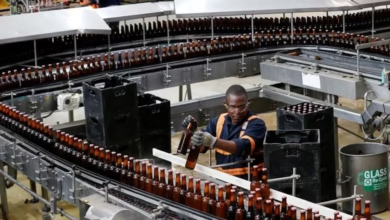
More Kenyan households are switching to cooking gas (LPG) thanks to government tax incentives that have made it more affordable, aligning with the state’s push to establish it as the main cooking fuel.
Policy reforms, better infrastructure, and the National LPG Growth Strategy have been the key drivers, even amid some price volatility.
According to the Energy and Petroleum Regulatory Authority (EPRA), LPG consumption increased by 14.1% to a record 443,932.46 tonnes in the year ending June 2025, from 388,970 tonnes the prior year
The average retail price for a 13-kg cylinder fell to Ksh.2,700 in June 2025, down from Ksh.3, 000 the previous year, with monthly usage peaking at 40,478.32 tonnes in May 2025 and dipping to 33,082.32 tonnes in March 2025.
EPRA data also shows import infrastructure capacity in Mombasa and Kilifi grew to 37,335 tonnes with 139 bulk storage and filling plants nationwide, up from 27,335 tonnes and 134 facilities.
This happened against the backdrop of state incentives which kicked off back in July 2023, when President William Ruto’s administration removed 8% Value Added Tax (VAT), 3.5% Import Declaration Fee, and 2.5% Railway Development Levy.
Also Read: Kenya to set up bulk LPG storage facilities at the Kenya Petroleum Refineries
Key reforms under the president’s strategy include promotion of LPG in public schools, household reticulation, and distribution to low-income areas.
Key among the strategies also includes infrastructure boosts, like the new Lake Gas facility in Vipingo, Kilifi County, to enhance supply security.
EPRA in its revelation, said there’s also a planned Open Tender System for LPG imports aimed to improve competitiveness, transparency, and efficiency.






**mindvault**
mindvault is a premium cognitive support formula created for adults 45+. It’s thoughtfully designed to help maintain clear thinking
**mind vault**
mind vault is a premium cognitive support formula created for adults 45+. It’s thoughtfully designed to help maintain clear thinking
Wohh precisely what I was searching for, thankyou for putting up.
Thanks for sharing this valuable information.
whoah this blog is great i love reading your articles. Keep up the good paintings! You know, lots of persons are hunting around for this info, you can help them greatly.
Thanks for sharing excellent informations. Your web-site is so cool. I’m impressed by the details that you have on this web site. It reveals how nicely you understand this subject. Bookmarked this website page, will come back for extra articles. You, my pal, ROCK! I found just the information I already searched all over the place and just couldn’t come across. What a perfect site.
Nice blog here! Also your site loads up very fast! What host are you using? Can I get your affiliate link to your host? I wish my website loaded up as fast as yours lol
Sản phẩm xanh chín tiếp theo nhất định không nên bỏ qua khi cùng 66b club đăng nhập vào đó chính là xổ số lô đề trực tuyến. Ngoài phiên bản truyền thống quen thuộc, sảnh chơi này còn đưa tới nhiều hình thức mới lạ khác để anh em tha hồ trải nghiệm, có thể kể đến như lô đề, keno, quay số,…..Mỗi tựa game sẽ có cách chơi khác nhau, nhưng đừng lo vì tất cả đều có hướng dẫn chi tiết cho người chơi trước khi chinh phục.
Nhà cái uy tín slot365 net không chỉ nổi bật ở sự đa dạng dịch vụ mà còn được đánh giá cao nhờ vào hệ thống vận hành ổn định và uy tín được xây dựng qua nhiều năm. Nhờ có giấy phép hợp lệ từ Curacao eGaming cùng sự giám sát chặt chẽ từ PAGCOR, trang này ngày càng khẳng định được vị thế trong lòng người chơi toàn cầu.
Hi my friend! I want to say that this article is amazing, nice written and come with almost all vital infos. I would like to peer extra posts like this .
Bet thủ khi đặt cược tại nhà cái sẽ có khả năng khám phá ưu điểm nổi bật mà tài xỉu 66b sở hữu, tạo nên điểm khác biệt so với sân chơi khác trên thị trường. Điểm thú vị đầu tiên là bạn hoàn toàn được tham gia săn thưởng tại nhiều sảnh cược cùng lúc. Anh em hoàn toàn có thể lựa chọn đặt cược tại sảnh casino và theo dõi trực tiếp các trận đấu thể thao thú vị cùng một lúc.